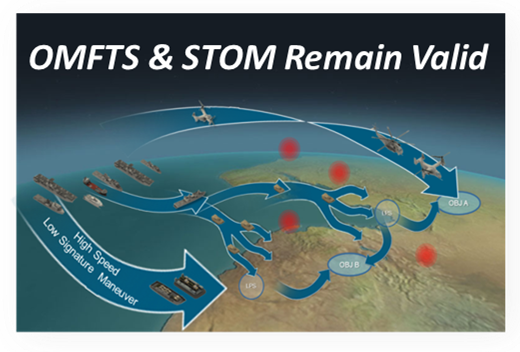Operational maneuver from the sea and ship-to-objective maneuver remain valid, and now we will execute them by developing a complementary portfolio of capabilities. We are increasing our emphasis on smaller, signature controlled forces—supported by precision fires—as the initial ground units ashore, maneuvered via multiple means, boats, or aircraft to gaps in an enemy defense.

The need to modernize the service-defining capability of transitioning from ship to shore and conducting forcible entry and surface assault is unquestioned. Initial indications are that ACV prototypes developed by industry have a swimming capability equal to an AAV. However, this will need to be tested by the Marine Corps. High water speed (HWS) is still a very important capability and the Marine Corps will continue the research and development to pursue technology that may enable this capability without unacceptable trade-offs.
The surface battalion will not likely be the first ashore. Once ashore, however, as our ACV Analysis of Alternatives showed, a wheeled vehicle-mounted force has significant tactical advantages when compared to a force equipped with combat vehicles designed and optimized for high speed water mobility. We can expand that benefit by subsequently landing additional wheeled vehicles to link up with the battalions already delivered by air. None of these changes are a radical shift in amphibious doctrine, but rather simply a re-sequencing of forces, refinements to tactics, and a more complete leveraging of fires and joint capabilities. We believe these changes provide the best response to emerging access challenges. In short, new threats have caused us to reassess our requirements, and we have a path for evolving our operations to meet these challenges.
